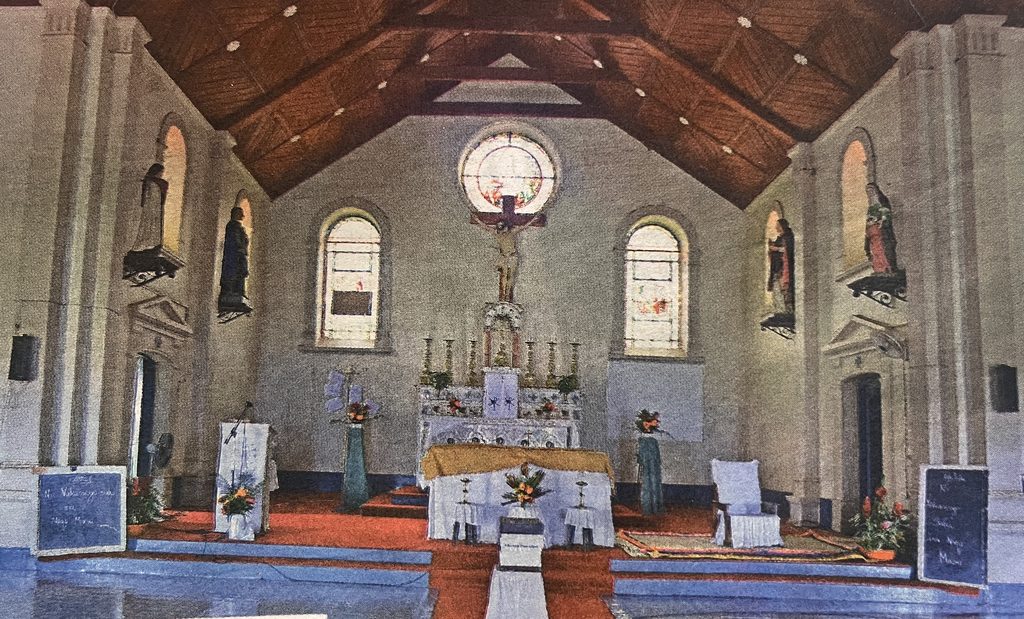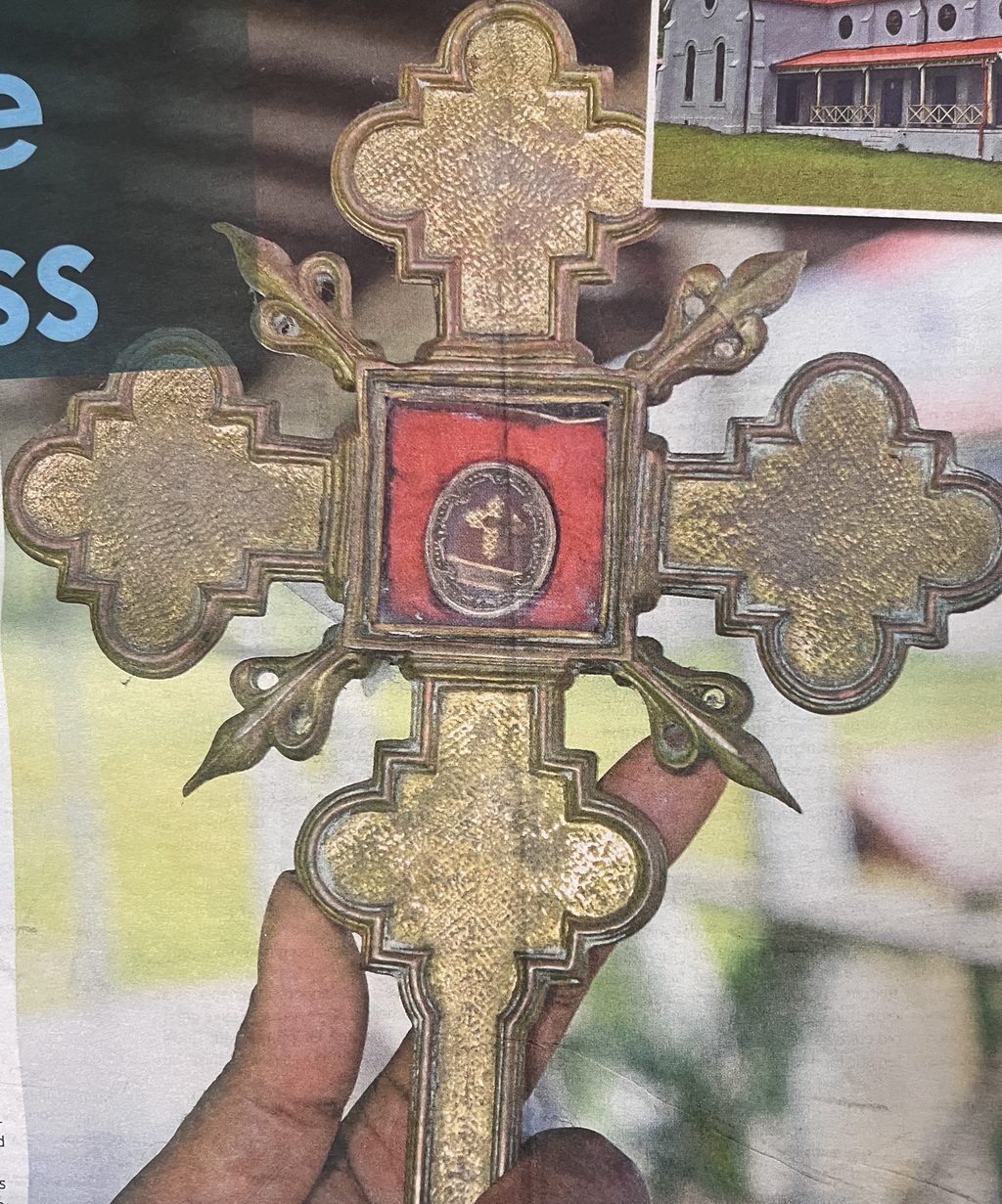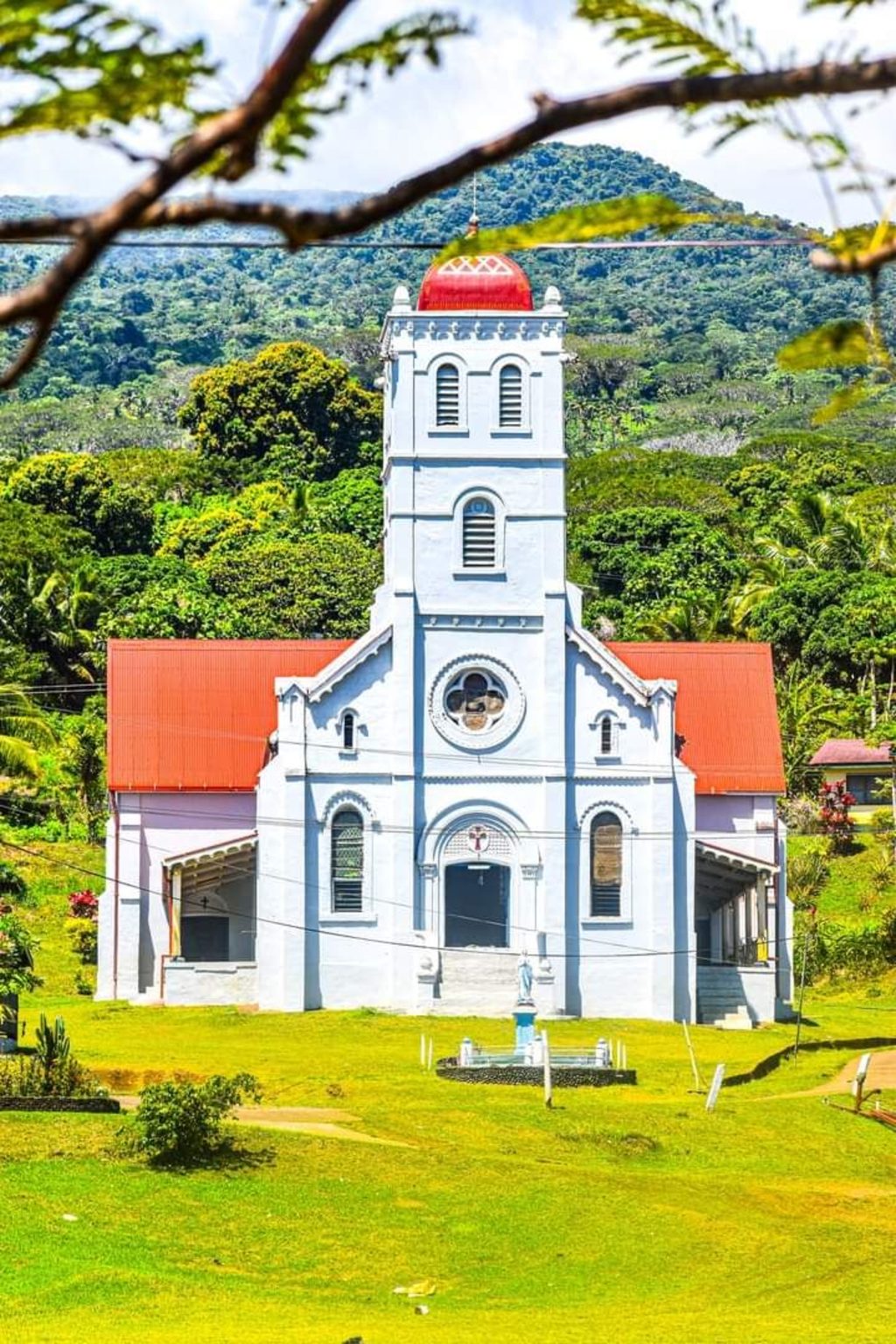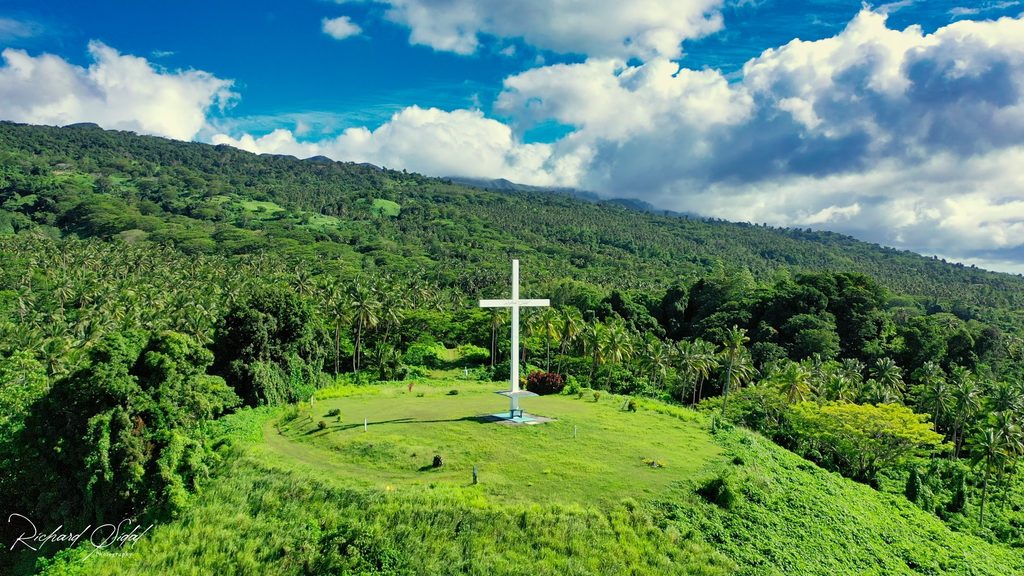Under the watchful eye of Holy Cross Mission’s priest (Wairiki, Taveuni) is a bronze crucifix parishioners believe contains a piece of the cross Jesus was crucified on more than 2000 years ago.
While the year this item of religious significance first came to Fiji (called True Cross) is not clear, it nevertheless holds spiritual significance among parishioners of Wairiki.
To begin with, there are many stories in the world about the True Cross. According to one account, the True Cross was hidden following Jesus’ death but was eventually found by Empresss Helena during her fourth century C.E. travels to the Holy Land.
In another account found in the New World Encyclopedia, the first cross was broken up into different shards and distributed across Christendom as relics.
Throughout history, different kings and churches claimed to possess fragments of this cross to legitimize their power and status.
For over a millennium, these supposed fragments of the True Cross were a prominent feature in the devotional practice of relics in Christian veneration.
By the end of the Middle Ages, so many churches claimed to possess a piece that John Calvin is famously said that there was enough wood in them to fill a ship.
Jese Koroinacika, who gave an account of Wairiki’s history during an interview with The Sunday times in 2018, believed in the story of the True Cross and was adamant a part of this had for some time been in the possession of the Holy Cross Parish.
“That cross has a piece of the original cross on which Jesus was crucified. Many years ago, people searched for Jesus Cross, they tested a number of crosses they found but there was a particular one that had healing powers,” Mr Koroinacika said.
“Pieces of that cross were sent to many catholic parishes around the world, one of those pieces was sent to Wairiki for safe keeping and remains the only place in Fiji that has it.”
This corroborated with Wairiki head cleric, Father Milio’s story, who during an interview said the cross had ‘mystic qualities’.
“Wairiki is a very special place because it has many historical crosses, among them is this special one which I hold in my hand. This cross contains a small piece of the original cross on which Jesus was crucified more than 2000 years ago,” said Fr Milio.
“Wairiki is the only place in Fiji believed to have the brass crucifix. It is different from other crosses because this cross has miraculous powers.”
Holy Cross Parish’s True Cross is similar to those found in famous cathedrals and reliquaries in Spain Serbia, Austria and France, among other places.
The relic can also be found in the Church of the Holy Sepulchre in Jerusalem and Rome’s Basilica of the Holy Cross in Jerusalem.
From Wairiki’s presbytery, where the True Cross bronze relic is kept, one can spot the mission’s garage a few metres away.
The dusty looking workshop was the site of the country’s first hydroelectricity damn.
“Wairiki was the first place in Fiji to produce hydro power. It made use of the water that flowed into the mission compound from the hills,” Fr Milio said.
Mr Koroinacika agreed saying Fr Paul Coquereau, who installed the hydropower plant was a very practical priest who was head cleric when he joined Holy Cross as a young boy in the 1940s.
Fr Coquereau is well remembered in various parts of Fiji for installing water supplies in several mission stations and villages before government got involved in the area of energy production.
On Taveuni, he was famous for two Wairiki projects.
He bought a small 3 kilowat hydro electricity plant from France and installed in the area now known as the garage, which is below the church.
The second project that Fr Coquereau is remember for is the mission’s soap factory.
During WWII (1939 – 1945), it was difficult to buy soap, so using water from the same source as the hydroelectricity plant he set up an oil press to extract oil from copra.
He bought caustic soda and made bars of soap. During the world war years, he supplied soap to all catholic missions in Fiji.
The hydroelectricity plant ran until the early 60s when it broke down. This was replaced by a new plant set up by Fr Crispin in the 1980s that had a maximum output if five kilowatts. This ran for a few years too.
Lack of maintenance and the increased size of the mission station ultimately brought the power plant to an end.
“Water used in the hydroelectricity plant back during Fr Coquereau’s days is from the same stream that flows past my house. Wairiki comes from the word Waireki, formed from the two i-Taukei words wai meaning water and reki meaning happy or joy,” Mr Koroinacika said.
“According to what I was told by church elders before me, when boats came here, crew members would stop for a drink and love the water from the streams in the church compounded. Wairiki or Waireki loosely translates to water of joy or happiness. It is the best tasting water on taveuni. It is cold and comes from the ground springs.”
After Fr Coquereau, priests came and went in quick succession. Bishop Foley, who was made the Vicar Apostolic of Fiji in 1944 made sure priests stayed in Wairiki for an average of three years.
After Fr Coquereau, Fr Laplante took his place. Fr Laplante was the first American priest and first non-Frenchman to be in charge of Wairiki. During his time, Wairiki had large yaqona plantations. He left in 1950.
Another famous cross is built above Wairiki and can be spotted by boat when approaching the Somosomo Strait from Savusavu or Buca Bay.
The huge white concrete cross stands much like the colossal statue of Jesus at the summit of Mt Corcovado, Rio de Janeiro, Brazil.
Built in the 1960s, the cross is 60 feet from the ground to the top. Before it was first erected builders made sure it was designed to withstand hurricane force winds of up to 150 miles an hour. About 55 years later it seems strong like the day it was built.
But the original cross was erected on January 12, 1906 after a few weeks of delay. Built in 1964 to commemorate the role of the church in the Battle of Wairiki in the 1860s, it was erected with the help of officers from visiting naval ships.
At the bottom of the cross is a 12ft by 12ft arm pointing to the exact battle site where Ratu Golea fought Maafu’s warriors at Wairiki’s beachfront.
Wairiki has another historic cross, a crucifix called by some as the Victory Cross. It is contained in a glass display case located inside its mission church. Reportedly made in 1907, it is the same one believed to be instrumental in giving Ratu Golea triumph in 1862’s Battle of Wairiki.
The crucifix was given to Ratu Golea the Tui Cakau by the French priest, Reverend Laurent Favre.
After the Wairiki war the crucifix was given to Tui Tunuloa for safe keeping but in 2005, after 143 years , Tui Tunuloa, Ratu Igenasio Loaloa, returned it to the Tui Cakau, Ratu Naiqama Lalabalavu on Friday, September 14 – Holy Cross Day.
Ratu Naiqama officially handed the crucifix over to the late Archbishop Petero Mataca for safe keeping. Archbishop Mataca then ordered that it be kept in the church of the Holy Cross, Wairiki for veneration by the people of Cakaudrove.This article was first published in The Sunday Times on November 18, 2018.
History being the subject it is, a group’s version of events may not be the same as that held by another group. When publishing one account, it is not our intention to cause division or to disrespect other oral traditions. Those with a different version can contact us so we can publish your account of history too — Editor.
Inside the Holy Cross cathedral in Wairiki, Taveuni.
Picture: FT FILE/SOPHIE RALULU

A close up of Wairiki’s True Cross in Father Milio’s hand. The bronze cross contains fragments of the original cross which followers believe Jesus was crucified on more than 2000 years ago. Only a few of these crosses exist in the world. Picture: FT FILE/SOPHIE RALULU

Holy Cross Church Taveuni.
Picture: HOLY CROSS PARISH FB PAGE

An aerial shot of the huge white ‘holy cross’ erected above Wairiki. The original cross was built in 1906. Picture: RICHARD SIDAL PHOTOGRAPHY/VIDEOGRAPHY FB PAGE


